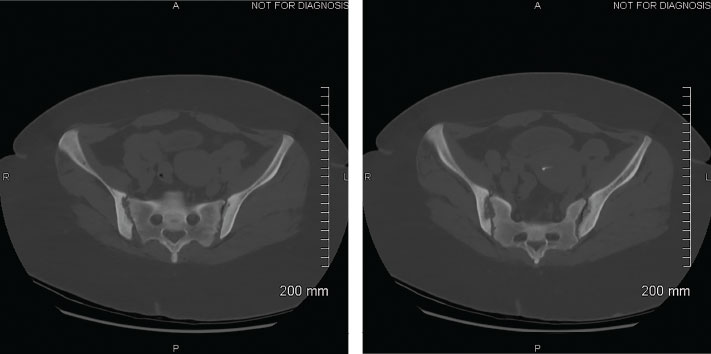
Figure 2: CTs of the Abdomen and Pelvis, Focus on the Sacroiliac Joints, 2020
Bilateral erosions of the sacroiliac joints with subchondral resorption/erosions that may be due to possible hyperparathyroidism or non-specific sacroiliitis are evident. The diffuse sclerotic appearance of imaged osseous structures is suggestive of renal osteodystrophy or sequela of prior metabolic derangement.
At least one other case report describes an association between gout and Gitelman syndrome.2 Historically, inherited defects in the salvage pathway (Lesch-Nyhan syndrome), phosphoribosyl pyrophosphate synthetase (PRP) overactivity, glucose-6-phosphate dehydrogenase deficiency or Down syndrome are thought to be the primary genetic causes for hyperuricemia due to urate overproduction from excess purine.1,2,9
In our patient, Gitelman syndrome was associated with premature, severe tophaceous gout through a pathway that is likely related to urate underexcretion and not overproduction due to a rare, genetic defect.1-6 This is particularly important because of the strong association of Gitelman syndrome with calcium pyrophosphate deposition disease, a common gout mimic.7
Conclusion
This case highlights the relationship between Gitelman syndrome and hyperuricemia, and it contributes to the limited number of case reports on Gitelman syndrome with gout and hyperparathyroidism.2,12 This case should reinforce and expand the paradigm of unusual genetic and metabolic causes of hyperuricemia, especially in younger patients who don’t typically meet the epidemiologic consideration for gout, particularly in young, premenopausal women.
Although rare, gout should be considered in patients with Gitelman syndrome.2
 Rebecca Lindsey Weiner, DO, is a first-year rheumatology fellow at the Medical College of Wisconsin in Milwaukee.
Rebecca Lindsey Weiner, DO, is a first-year rheumatology fellow at the Medical College of Wisconsin in Milwaukee.
 Ann K. Rosenthal, MD, FACP, is the Will and Cava Ross Professor of Medicine, Division of Rheumatology, Medical College of Wisconsin, and is chief of the Rheumatology Division and associate chief of staff for research and development at the Zablocki VA Medical Center.
Ann K. Rosenthal, MD, FACP, is the Will and Cava Ross Professor of Medicine, Division of Rheumatology, Medical College of Wisconsin, and is chief of the Rheumatology Division and associate chief of staff for research and development at the Zablocki VA Medical Center.
References
- Mount DB. Urate Balance. In UpToDate, Post TW (Ed), Waltham, Mass. (Accessed Oct. 19, 2020).
- Troster SM, Raizman JE, Rubin L. An unusual case of gout in a young woman with Gitelman Syndrome. J Rheumatol. 2016 Nov;43(11):2085–2087.
- El-Sheikh AAK, van den Heuvel JJM, Koenderink JB, et al. Effect of hypouricaemic and hyperuricaemic drugs on the renal urate efflux transporter, multidrug resistance protein 4. Br J Pharmacol. 2008 Dec;155(7):1066–1075.
- Emmett M, Ellison DH. Bartter and Gitelman syndromes. In UpToDate, Post TW (Ed), Waltham, Mass. (Accessed Oct. 19, 2020).
- Naesens M, Steels P, Verberckmoes R, et al. Bartter’s and Gitelman’s syndromes: From gene to clinic. Nephron Physiol. 2004;96(3):p65–78.
- Simon DB, Nelson-Williams C, Bia, et al. Gitelman’s variant of Bartter’s syndrome, inherited hypokalaemic alkalosis, is caused by mutations in the thiazide-sensitive Na-Cl cotransporter. Nat Genet. 1996 Jan;12(1):24–30.
- Punzi L, Calò L, Schiavon F, et al. Chondrocalcinosis is a feature of Gitelman’s variant of Bartter’s syndrome. A new look at the hypomagnesemia associated with calcium pyrophosphate dihydrate crystal deposition disease. Rev Rhum Engl Ed. 1998 Oct;65(10):571–574.
- Cao J, Zhang J, Zhang Y, et al. Plasma magnesium and the risk of new-onset hyperuricaemia in hypertensive patients. Br J Nutr. 2020 Mar 26;1–8.
- Robinson PC. Gout—An update of aetiology, genetics, co-morbidities and management. Maturitas. 2018 Dec;118:67–73.
- Ponvilawan B, Charoenngam N, Ungprasert P. Primary hyperparathyroidism is associated with a higher level of serum uric acid: A systematic review and meta-analysis. Int J Rheum Dis. 2020 Feb;23(2):174–180.
- Hui JY, Choi JWJ, Mount DB, et al. The independent association between parathyroid hormone levels and hyperuricemia: A national population study. Arthritis Res Ther. 2012 Mar 10;14(2):R56.
- Wen YK. An unusual case of Gitelman’s syndrome with hypercalcemia. Ren Fail. 2012;34(2):241–243.
- Chen W, Wang Y, Li Y, et al. Gout mimicking spondyloarthritis: Case report and literature review. J Pain Res. 2017 Jun 29;10:1511–1514.
- Alqatari S, Visevic R, Marshall N, et al. An unexpected cause of sacroiliitis in a patient with gout and chronic psoriasis with inflammatory arthritis: A case report. BMC Musculoskelet Disord. 2018 Apr 20;19(1):126.

